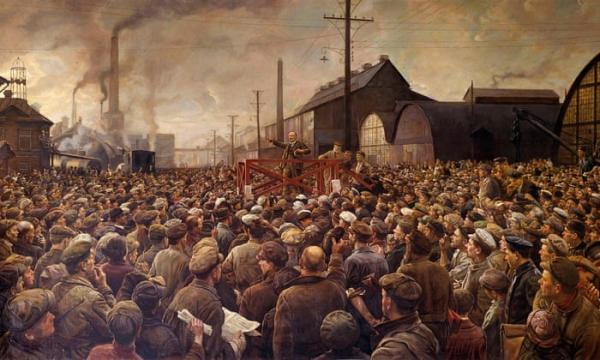Russian, East European & Eurasian History

The History Department at The Ohio State University offers an internationally recognized graduate program in Russian, East European and Eurasian history.
Courses in Russian, East European and Eurasian History
Faculty who research and teach Russian, East European and Eurasian History
Graduate Training and Courses
Students in the Russia/East Europe program receive a rigorous training in both teaching and research in a supportive and collegial environment. Our faculty works together in joint-advising arrangements to provide students with extensive contact and interaction both in and out of the classroom.
Students are trained in Russian and East European history, as well as in comparative and methodological minor fields. This diverse scope of geographical areas and historiographical fields produces intellectually wide-ranging scholars and prepares our students well for the demands of the job market, as our recent successes in job placement indicate. Check out the list of recent OSU PhD's in Russian, East European and Eurasian History
Graduate Funding
Graduate student funding packages and research support are among the best in the country.
- All admitted graduate students receive guaranteed multi-year funding packages from the history department.
- The department also offers numerous research grants, including the Wildman Award, specifically designated to support the research of graduate students in the Russia/East Europe field.
- Foreign Language and Area Studies (FLAS) Fellowships are readily available from the Center for Slavic and East European Studies for academic-year and summer language study.
- The Mershon Center offers generous fellowships to support graduate students' research travel.
- The Office of International Affairs provides grants for graduate students conducting dissertation research abroad.
- In recent years, Ohio State graduate students have been very successful in national fellowship competitions, such as Fulbright-Hays, IREX, ACTR, and SSRC.
Library Resources at OSU in Russian, East European, and Eurasian Studies
The Ohio State University has one of the country's finest library collections in Russian and East European History. The Russia/East Europe collection contains 800,000 volumes, 1,400 serials, and 175,000 sources on microfilm. Basic reference works and current newspapers, magazines, and scholarly journals in Slavic languages and in English are available in the Slavic and East European Reading Room of the Main University Library.
For more information about the library resources contact Miroljub Ruzic, our Russian-East European Librarian or visit the East European and Slavic Studies website.
The library also houses the Wildman-Perez Russian Peasant Collection of nineteenth-century publications on peasant history
The Hilandar Research Library is among the special resources of the University Libraries system. A repository of microfilm copies of medieval Slavic manuscripts, the collection includes Church Slavonic, Russian, Bulgarian, Serbian, Turkish and Wallachian charters, edicts, and other documents dating from the early eleventh century to modern times. The Hilandar Research Library recently acquired over 1,200 manuscripts on microfilm from widely scattered and previously inaccessible libraries in Russia, making The Ohio State University the leading center of medieval and early modern Slavic studies in the United States. The Hilandar library offers research assistantships to students in the history department, as well as research facilities and the annual Medieval Slavic Summer Institute.
Slavic, East European and Eurasian Resources at OSU
The graduate program in Russian/East European history is part of a large, vibrant network of Slavic and Eurasian studies at the University.
- The Center for Slavic and East European Studies
- At OSU, CSEES develops new courses and funds existing classes, sponsors lectures, administers a Slavic and East European studies M.A. program, supervises exchange programs with foreign universities, provides monies for library acquisitions, awards Foreign Language and Area Specialist (FLAS) Fellowships to OSU graduate students, oversees the awarding of other grants, maintains a large video library, and houses the Current Digest of the Post-Soviet Press. Among its other activities, CSEES annually hosts the Midwest Slavic Conference. CSEES is an invaluable resource for graduate students in the history department.
- The Department of Slavic and East European Languages and Literatures
- The Department of Slavic and East European Languages and Literatures, with a faculty of ten full-time professors offers instruction in Russian and other East European languages, as well as coursework in East European literature and linguistics.
- Mershon Center for International Security and Public Policy
- Melton Center for Jewish Studies
- Department of Near Eastern Languages and Cultures
- Center for Medieval and Renaissance Studies
- Office of International Affairs
Information on requirements and application procedures for prospective graduate students.
